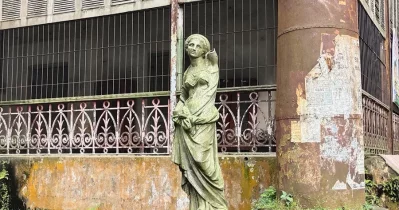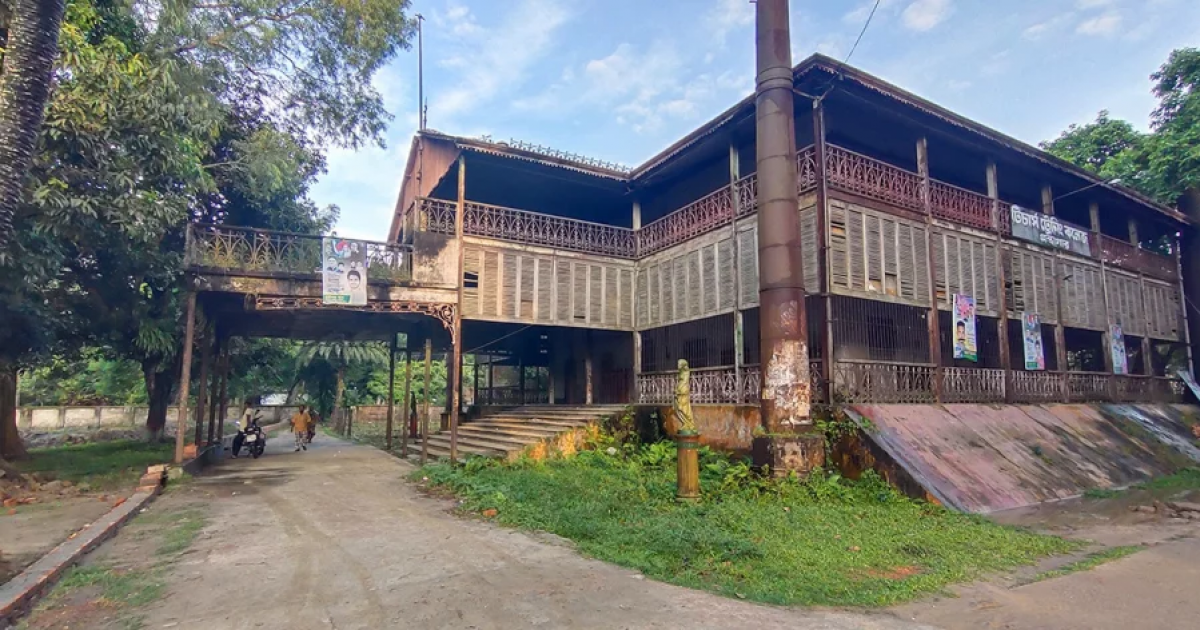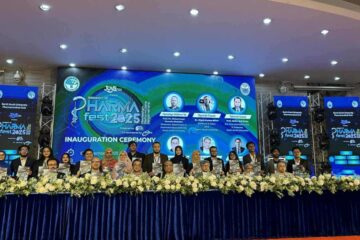Shashi Lodge, also known as Mymensingh Rajbari (Mymensingh Palace), is arguably the most visited attraction for tourists from home and abroad who travel to the north-central divisional city of Mymensingh. Interestingly, not even half of these visitors manage to see another hidden architectural gem—Alexandra Castle (also pronounced by some as Alexander Castle)—despite its location less than half a kilometre from the palace compound.
Although the two historic structures stand close to each other, there is no direct route from Shashi Lodge to Alexandra Castle, requiring a short detour. With the passing of older generations, many current residents are not even aware of the iron-built structure or its historic and architectural significance. These factors are likely why so many tourists who visit Shashi Lodge miss out on Alexandra Castle.
Last year, during an official tour of Mymensingh, I found time to visit and appreciate the beauty and grandeur of Shashi Lodge. But frankly speaking, I had no idea that another gem stood so close by—no one even mentioned it as a place of interest. So this autumn, when I planned a personal trip to Mymensingh, the first thing I added to my bucket list was a visit to Alexandra Castle—a 19th-century two-storey structure made largely of iron and Burma teak.
Alexandra Castle—also known as Lohar Kuthi (Iron Cottage)—is a must-visit if you are in Mymensingh. Built in 1889 by Maharaja Suryakant Acharya Chowdhury to mark the centenary of the district—established as early as 1787 under British rule—the castle reflects an exquisite taste for iron-rich architecture, complete with a sloping wrought-iron roof. Locals and some historians say the Maharaja imported high-quality teak from Burma and brought in artisans from China to construct this elegant bungalow-style palace.
There are differing stories about how the castle got its name. Some say it was named after Mymensingh’s first district magistrate, N. S. Alexander. However, the more widely accepted account is that it was named after Alexandra of Denmark (Alexandra Caroline Marie Charlotte Louise Julia; 1 December 1844 – 20 November 1925), who served as Queen of the United Kingdom and Empress of India from 1901 to 1910 as the wife of King Edward VII.
In the late 19th century, the Maharaja spent 45,000 rupees to build Alexandra Castle, a garden house with a white stone floor and interiors adorned with royal furniture. The castle once hosted great personalities such as Rabindranath Tagore, Mahatma Gandhi, Lord Curzon, Chittaranjan Das, Nawab Sir Salimullah, Wajed Ali Khan Panni, Subhas Chandra Bose, and many others. Today, however, it stands in ruins—a stark reminder of our indifference towards priceless heritage. The building sits on a raised plinth beside the Brahmaputra, with traces of its old gardens and ponds still visible. Until recent years, the ground floor served as the library of the Teachers’ Training College, but the building is now off-limits due to its deteriorated condition.

In front of Alexandra Castle lies a playground shaded by an old banyan tree. The structure’s design reflects the aesthetic sense and wealth of the Mymensingh zamindars. Two white Greek-style sculptures stand on either side of the entrance, as though they were relics of ancient artistry. Sadly, the dismembered hands of both sculptures reveal how decades of neglect have turned this century-old treasure into a forgotten relic.
Despite the wear of time, the historical atmosphere remains alive, and a serious restoration effort could still save this remarkable architectural heritage—one of its kind in Bangladesh.
Mymensingh at a glance
Mymensingh is one of the 16 oldest districts of Bangladesh, constituted by the British East India Company on May 1, 1787. Being nearly 240 years old, it holds a rich cultural and political history.
It is bordered on the north by India’s Meghalaya state and the Garo Hills, on the south by Gazipur district, on the east by Netrakona and Kishoreganj districts, and on the west by Sherpur, Jamalpur, and Tangail districts.
The city of Mymensingh stands on the bank of the old Brahmaputra River. After an earthquake altered the river’s course, the main flow of the Brahmaputra shifted to the Jamuna, which runs to the west of the greater Mymensingh region. The distance between Mymensingh and Dhaka is about 120 km. The city was connected to Dhaka by railway around 1865. Road communication was initially through Tangail until 1979, after which the Dhaka–Mymensingh highway via Bhaluka was completed.
Maharaja Suryakanta established the first public hospital in Mymensingh along the Brahmaputra. It later became a leprosy hospital. Mymensingh Medical College, one of the oldest and largest medical institutions in Bangladesh, now serves residents of the district as well as neighbouring areas.
The country’s premier institute for agricultural education—Bangladesh Agricultural University—is also located in Mymensingh.
The Greater Mymensingh region (Mymensingh district along with five neighbouring districts) was originally formed as a single district by the British administration in 1787. It was later reorganized in two phases into six districts: Mymensingh, Jamalpur, Kishoreganj, Netrakona, Sherpur, and Tangail.
On January 12, 2015, the government declared the establishment of Mymensingh Division. The original plan was to include all six historic districts of Greater Mymensingh. However, residents of Tangail and Kishoreganj preferred to remain part of Dhaka Division. Finally, on September 14, 2015, Mymensingh was officially recognized as a division comprising four districts: Mymensingh, Jamalpur, Sherpur, and Netrakona.



